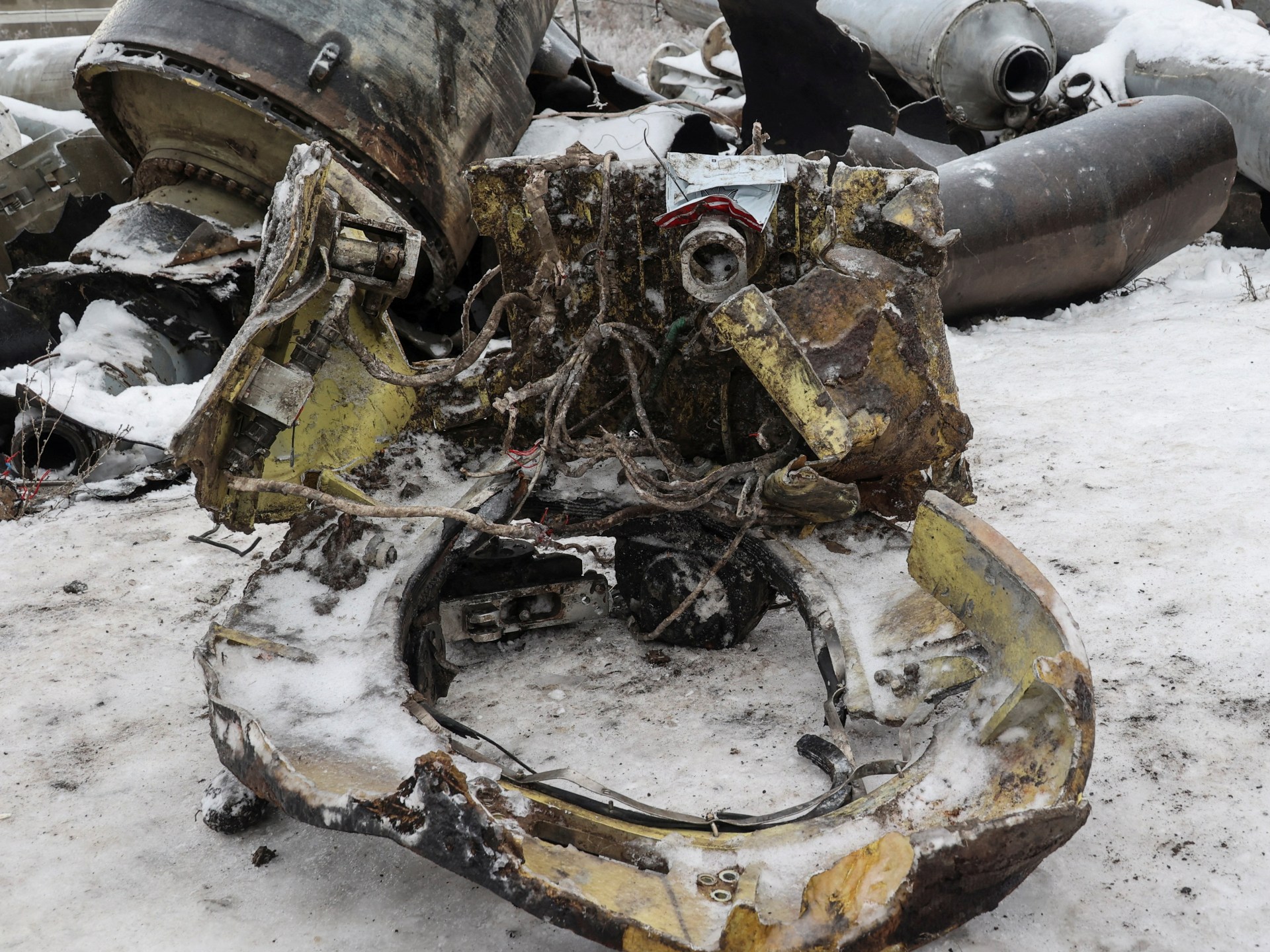Expert body tells UN Security Council the weapon’s discovery suggests a violation of international sanctions on Pyongyang.
The debris from a missile that landed in the Ukrainian city of Kharkiv on January 2 was from a North Korean Hwasong-11 series ballistic missile, United Nations sanctions monitors told a Security Council (UNSC) committee in a report seen by the Reuters news agency on Monday.
In the 32-page report, the UN sanctions monitors concluded that “debris recovered from a missile that landed in Kharkiv, Ukraine, on 2 January 2024 derives from a DPRK Hwasong-11 series missile” and is in violation of the arms embargo on North Korea.
Formally known as the Democratic People’s Republic of Korea (DPRK), North Korea has been under UN sanctions for its ballistic missile and nuclear programmes since 2006, and those measures have been strengthened over the years.
Three sanctions monitors travelled to Ukraine earlier this month to inspect the debris and found no evidence that the missile was made by Russia. They “could not independently identify from where the missile was launched, nor by whom”.
“Information on the trajectory provided by Ukrainian authorities indicates it was launched within the territory of the Russian Federation,” they wrote in an April 25 report to the UNSC’s North Korea sanctions committee.
“Such a location, if the missile was under control of Russian forces, would probably indicate procurement by nationals of the Russian Federation,” they said, adding that this would be a violation of the arms embargo on North Korea.
The Russian and North Korean missions to the UN in New York did not immediately respond to a request for comment on the monitors’ report.
The US and others have accused North Korea of transferring weapons to Russia for use against Ukraine, which it fully invaded in February 2022. Moscow and Pyongyang have denied the accusations, but promised last year to deepen military relations.
At a Security Council meeting in February, the US accused Russia of launching DPRK-supplied ballistic missiles against Ukraine on at least nine occasions.
The UN monitors said the Hwasong-11 series ballistic missiles were first publicly tested by Pyongyang in 2019.
Russia last month vetoed the annual renewal of the UN sanctions monitors – known as a panel of experts – which has for 15 years monitored the enforcement of the international sanctions on North Korea. The mandate for the current panel of experts will expire on Tuesday.
Within days of the January 2 attack, the Kharkiv region prosecutor’s office showcased fragments of the missile to the media, saying it was different from Russian models and “this may be a missile which was supplied by North Korea”.
Check out our Latest News and Follow us at Facebook
Original Source

